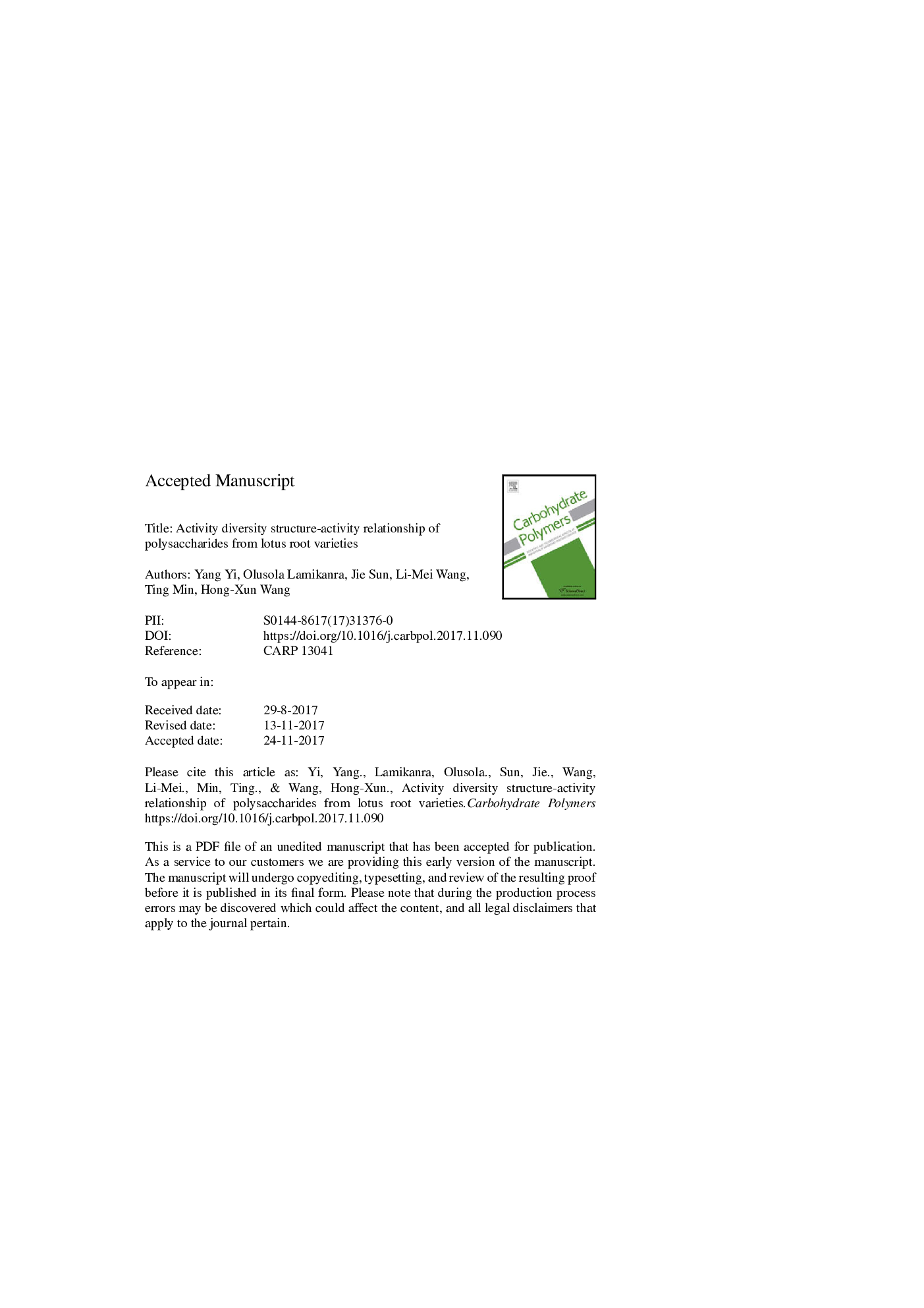| Article ID | Journal | Published Year | Pages | File Type |
|---|---|---|---|---|
| 7782888 | Carbohydrate Polymers | 2018 | 23 Pages |
Abstract
The in vitro activities of 39 polysaccharides from different parts of 13 lotus root varieties were evaluated and introduced into multiple linear regression analysis to explore the structure-activity relationships using their chromatographic fingerprint features as independent variables. Their 2,2-diphenyl-1-picrylhydrazyl/hydroxyl radical scavenging abilities, ferric reducing antioxidant powers and growth-inhibitory effects against HepG2 and SGC7901 cancer cells were all diverse, with the variable-coefficients ranging from 24.49% to 87.76%, while their macrophage immunostimulatory activities evaluated by nitric oxide production and tumor necrosis factor-alpha secretion showed relatively low variations. Lotus root polysaccharides (LRPs) from the peels and nodes possessed stronger activities than those from the fleshes. Their fingerprint-activity relationship models indicated that monosaccharide composition was closely related to the activities, but not molecular weight. LRPs have health-improving potentials, and their activities can be partly predicted by the quantitative fingerprint-activity relationship model.
Keywords
high performance size-exclusion chromatographyLRPsHCADPPHFRAPPDAHPSECMLR2,2-diphenyl-1-picrylhydrazylphotodiode arrayFingerprintnitrogen oxideHierarchical cluster analysistumor necrosis factor-alphaStructure-activity relationshipMultiple linear regressionLotus rootRefractive indexTNF-αPolysaccharideoptical densityferric reducing antioxidant power
Related Topics
Physical Sciences and Engineering
Chemistry
Organic Chemistry
Authors
Yang Yi, Olusola Lamikanra, Jie Sun, Li-Mei Wang, Ting Min, Hong-Xun Wang,
